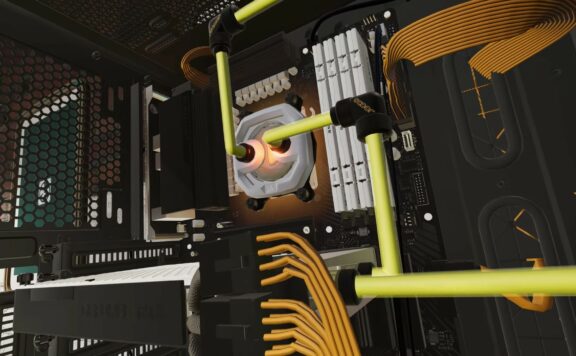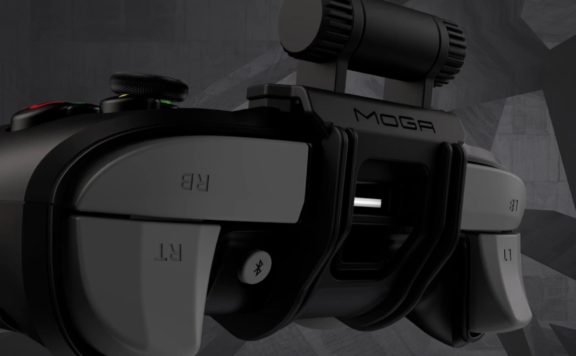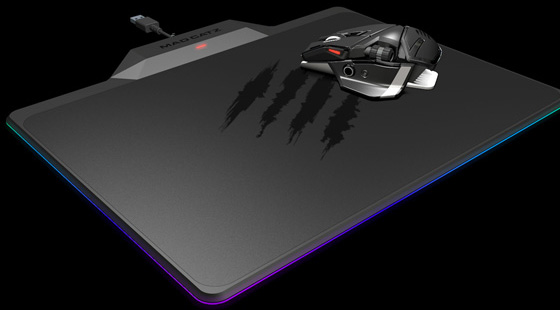We just got our hands on the Maono PD200X, a new combined USB/XLR dynamic mic that looks perfect for the creator ready to get serious about their sound.
The Maono PD200X is a combined USB/XLR microphone from the team that integrates plenty of versatility with a bit of RGB trim and is aimed a specific subset of budding content creator. Anybody ready to slide streamer’s first mic of the edge of their desk and move up to something a bit more meaningful might not quite be prepared to go straight to the top of the market. The PD200X might just be the the obvious step up from entry level headsets, combining a premium sound setup without much hassle.
Specifications
Microphone Type: Dynamic Capsule
Polar Pattern: Cardioid
Connectivity: XLR, USB-C, 3.5mm monitoring jack
Mic Gain Range: 0 to +42dB
Sampling Rate: 48kHz / 24bit
Frequency Response: 40Hz-16kHz
Sensitivity: XLR:-52dBV / USB:-10.5dBFS/Pa(Max)
SPL: >130dB SPL
Out of the box
Getting the Maono PD200X out of the box isn’t exactly problematic. While Maono’s heftier PD400X comes securely packaged in a very premium container, this option is altogether more practical. Slide off the cover sheath and open the internal lid to get straight into the aforementioned microphone and assorted bits. Packing is sufficient, and that’s all there really is to say about it. Presentation is consistent with Maono’s other yellow and black branding. Everything comes firmly fitted into a foam container., and you can check out the initial unboxing below.
First impressions of our latest mic from Maono are that it sits between the Maono DM30 and the PD400X. Available in white or black, and sticking with a consistent form factor, the audio internals are wrapped inside a cylindrical metal housing. While the DM30 is a plastic affair, the PD200X swaps this out for a mostly metal chassis. The base of the mic is reassuringly hefty, although the very bottom of this wrap around metal exterior is plastic. Here, you’ll find various input/output ports. This includes the USB-, XLR, monitoring jack, and manual lighting controls. Around the outer shell, new owners will find a physical mute button and well as a combined gain/volume dial. A minimal amount of branding comes printed along the length of the outer shell, making the heritage of this mic obvious for all. Running up the length of this unt is the same sort of Maono lettering we’ve seen on other models, but this time in stark white. While I prefer the grey and black aesthetic of the PD400X, this is a minor aesthetic niggle that is likely to get lost when the RGB kicks in.

Nestled just above the midpoint a of the PD200X is the microphone’s own RGB ring. Powered off, this white trim tops off the metal case, and leads up to a plastic ring and foam pop cover for the dynamic part of this mic. Situated underneath a similarly cylindrical mesh pop filter is metal guard mesh and the PD200X’s custom mic capsules. You won’t find a base stand here. Unlike the PD400X. maono expect this to go straight onto a mic arm, which is why the PD200X has a shock mount and screw thread straight out the box. Its round plastic frame is far from the top end of the market, but it does seem like a justified addition in this format.
Sound and Spec
The PD200X provides a straightforward solution for streamers, podcasters, and individuals looking to enhance their daily driver experience. The dynamic offering from Maono is a front facing microphone, meaning the only pickup pattern available is to talk into the top. It comes configured in a cardioid polar pickup pattern, and the inherent nature of its dynamic design mean that we expected a great sounding set of vocals with little background noise pickup.
Frequency Response
The overall result here is a mic that is surprisingly solid for vocal tasks. The small stature belies a solid bit of kit that balances the needs of a desktop environment with a rounded sound. For vocals, it comes in with a clear and naturally warm tone. As you can see from the frequency response, it works well for bass leaning vocals and there’s a definite upward shift in the response around the lower ranges. A decent and consistent response can mostly be seen across the board, which results in a clear and solid pickup of my own voice, even if the overall soundscape is a little contained. It’s a good performance for a mic at this price range/ Although I’d say the PD400X is more consistent and brings a more natural sound, these are minor niggles that ultimately reflect the intended audience. Punching way above its $80 price point, or $109 with the optional boom arm. The cardioid pickup pattern gives plenty of focus to the speaker, making it a great choice for streamers, content creators, podcasters, and the like. Who are ready to jump in an try out a powered XLR mic.

If you’re new to the whole streaming scene and can only rustle up a spare USB port, then the PD200X is still a solid option. Without any serious configuration I was able to plug in and go. This will be true of almost any device with the ability to support a USB microphone. MacBook’s, PCs, iOS, Android, and Chromebook will al support this plug and play arrangement. The included USB C to USB A/C cable allows for this, and the sound quality that comes out of the PD200X is comparable to the XLR option. While you’ll need a compatible interface to hook up an XLR input to your computer, there isn’t any such hesitation here. Plugging straight into a USB port, I almost felt like the USB configuration was louder. The vocals still retain the same focus on the speaker, although some of the warmth and range is lost here. Thankfully, the Maono Link software is at hand to help with all these issues.
This free software provides a deskside experience that matches other Maono devices. It adds point and click control of the gain, monitoring volume, RGB, tone, and provides a range of filters. With the click of a button the overall tone of the recording can be switched up. Natural, Original, and Deep all sound distinctive, while the addition of a software limiter and compressor is a massive boon. The desktop software doesn’t have the overtly complex configuration of a fully-fledged mixer, or even quite as many options as Logitech G+. Instead, it balances function with ease of use. You’ll get RGB lighting with one configurable zone or a rainbow effect. Similarly, an EQ adds some configuration, but only four distinct options.

The easy access software setup points this squarely at the mid to early entrant market, which is likely why you can also pick up a bundled mic B01 boom arm and XLR cable as part of this package. While neither of these are the most premium parts available, they are more than capable. The mic arm is steel from top to bottom and articulates at two separate joints. The joints move around 180 degrees each, while the scissor style arm can rotate around the base too. Up to 150 Pounds can be hung from this stand, meaning nothing shifted when I tested it on my desk. The inclusion of an additional mic grip for this package seems somewhat superfluous, but the screw thread adaptor in the PD200X box meant that the base Is plenty flexible when you decide to upgrade either device.
All in, the PD200X is a solid device and a great option for anybody looking to go solo. It presents as a substantial leap up from the likes of the Razer Seiren or Tonor TC-777, and crams in much of the same specs as the PD400X. While the comparable Blue Yeti Mini certainly adds in more options, the solid sound quality, dynamic design and XLR interface are the clinchers that make the PD200X the perfect option to upgrade your podcast now and in the future. You can get the Maono PD200X now over on the official website.






